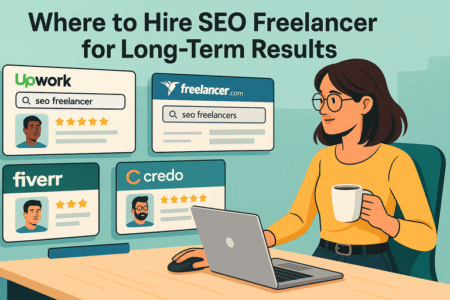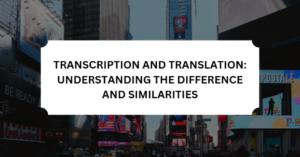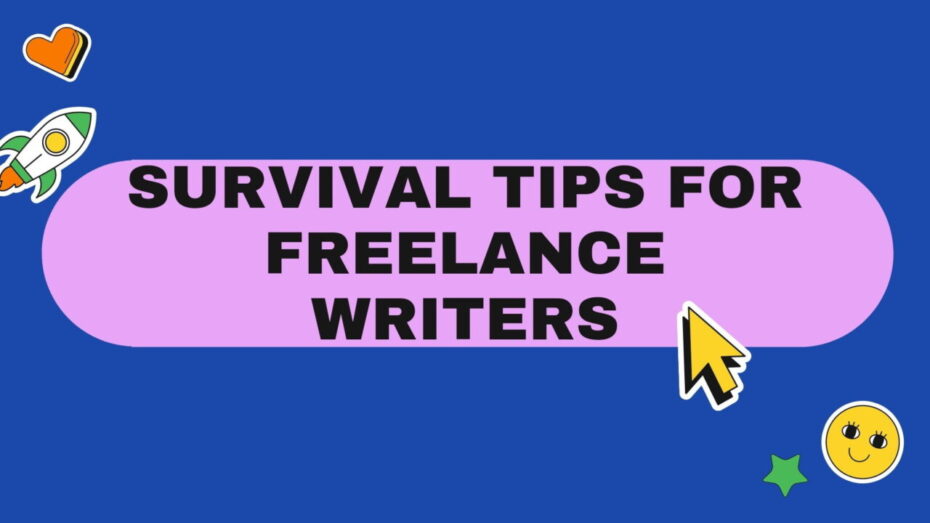Table of Contents
When you hire ux designer for your project, are you confident you’ll get results that truly delight your users—or worried you might waste time and money on the wrong fit?
I get how overwhelming it feels to sort through portfolios and promises, hoping you’ll avoid those hiring pitfalls everyone warns about. But what if you could spot the most common mistakes before they cost you?
How do you make sure you don’t choose the wrong person, overlook the real skills you need, or miss a key step that could make or break your project’s success?
Stick with me and I’ll break down the exact mistakes most teams make, plus how you can avoid them—so your next hire isn’t just a designer, but a true game-changer for your user experience.
1. Not Defining Clear UX Goals Before You Hire UX Designer
If you jump straight into hiring a UX designer without knowing exactly what you want, you’re likely to run into confusion, wasted time, and missed expectations.
Let me walk you through why this is such a common—and costly—mistake.
Align Project Outcomes With Your Business and User Needs
When you hire a UX designer, your goals act as their north star. Without these, even the best designer is left guessing. I always suggest starting with a quick brainstorming session with your stakeholders.
Ask questions like: What business outcome do we want? Who are our users? What pain points do we want to solve?
Here’s what helps:
- Draft a UX brief: List the top problems users face and the outcomes you want.
- Share sample personas: This gives your designer a living, breathing sense of your users’ realities.
- Set measurable targets: For example, “Reduce sign-up drop-off by 20%” or “Increase average session duration to 5 minutes.”
I’ve seen teams skip this and end up endlessly reworking designs or, worse, launching features nobody uses. You don’t need a 30-page spec—just a clear one-pager with your “must-haves” and “nice-to-haves.”
If you want to supercharge this step, use collaborative tools like Miro or FigJam to sketch out user journeys and high-level screens with your team. Invite your designer into the process early—this gives them the context they need and builds trust from the start.
Pro tip: Clear goals aren’t just for the designer; they’ll keep you focused too. You’ll thank yourself every time a decision gets tough.
2. Overlooking Portfolio Relevance When You Hire UX Designer
It’s tempting to skim through a designer’s portfolio and get wowed by pretty visuals. But surface-level beauty doesn’t always translate into results for your project.
Here’s why I always dig deeper.
Assess How Their Past Work Matches Your Industry and Audience
You want more than great-looking screens. I recommend reviewing:
- Projects similar to yours: If you’re building a fintech app, a designer who’s worked on financial dashboards brings invaluable insights.
- Problem-solving ability: Look for before-and-after shots, explanations of the challenge, and what changed as a result.
- Process documentation: Can they explain their design decisions? Do they include wireframes, user flows, or usability test results?
What I often do is ask candidates to walk me through a project relevant to my own. If they designed a B2B SaaS dashboard, I want to know how they handled data density, navigation, and onboarding flows.
A little-known trick: Ask them to “redesign” one small aspect of your current product as part of the interview. This shows how they think and whether they understand your specific challenges—not just how they decorate an interface.
Remember, you’re not hiring for generic design skills; you’re hiring for your unique users, product, and business context.
3. Ignoring UX Designer’s Research and Collaboration Skills
A great UX designer is much more than a visual artist—they’re part detective, part diplomat.
If you overlook their research and collaboration chops, you could end up with beautiful screens that don’t solve real problems.
Vet Their User Research Approach and Team Communication Style
When you hire a UX designer, ask:
- How do they uncover user pain points? Listen for mention of interviews, usability tests, surveys, or analytics reviews.
- What methods do they use? From simple card-sorting to advanced remote user testing with tools like Lookback.
- How do they work with devs, PMs, and marketers? A solo operator who can’t share, adapt, or accept feedback may slow you down.
In my experience, a designer who “owns” their ego is gold. I once worked with someone who kicked off every sprint with a 30-minute huddle—sharing findings, demoing sketches, and inviting critique. Our end product was miles better, simply because he valued feedback and data as much as pixel-perfect visuals.
If you want to test this, try a short trial period where the designer joins a live session: Ask them to interview a stakeholder or run a quick remote test. See if they ask good questions and communicate findings in plain English.
Building products is a team sport—your UX designer needs to thrive in the locker room, not just on the field.
4. Focusing Only on Price When You Hire UX Designer
It’s always tempting to shave costs, especially on design. But, as someone who’s seen projects suffer from cheap shortcuts, I can’t overstate this: The lowest rate rarely delivers the best ROI.
Balance Budget With Expertise and Expected Outcomes
Here’s what can go wrong if you hire a UX designer based only on price:
- Junior designers often need more direction: You’ll spend more of your time (or your team’s) explaining, revising, or filling gaps.
- Hidden costs add up: Poor user flows, lack of accessibility, or missed user pain points lead to wasted dev hours, higher support costs, and lost revenue.
- Strategic value is lost: Senior designers bring frameworks, shortcuts, and battle-tested strategies that save money long-term.
I like to view design as an investment, not a line item. For example, when I hired a mid-level designer for an ecommerce project, their user testing insights helped us improve conversion rates by 18%. That paid their fee tenfold.
If you’re budget-conscious, ask candidates to quote on a milestone basis—such as a fixed price for “User research + wireframes” or “Prototype + usability testing.” This keeps costs transparent and output-focused.
Paying a bit more upfront for expertise often means faster timelines, fewer mistakes, and happier users.
5. Skipping the Test Task or Trial Period Before You Hire UX Designer
I get why people skip the trial project step—it takes time and effort. But I always advise clients to run a short, paid trial or test task.
It reveals far more than interviews or portfolios ever will.
Evaluate Real-World Problem-Solving and Communication on Your Project
Here’s how I structure it:
- Pick a real challenge: Something small but tricky from your backlog—like simplifying an onboarding screen.
- Give a tight brief: Limit time and scope (e.g., “You have 6 hours, show sketches and a user flow”).
- Request a mini hand-off: Ask for both design files (e.g., Figma) and a Loom video walking through their solution.
You’ll learn:
- How they interpret vague specs
- Whether they ask clarifying questions (a sign of a thoughtful designer)
- How well they communicate rationale and alternatives
In one hiring round, I saw a candidate completely rethink a checkout process, streamlining steps and pointing out a blocker we’d never noticed. She stood out immediately.
A test task is your best chance to see a designer in action—solving your real problems, not just sharing past glories.
6. Failing to Check for UX Designer’s Understanding of Your Tech Stack
A common pitfall I see: You hire a UX designer who creates dazzling screens, only for the dev team to groan, “We can’t build this!” Aligning your designer with your actual tech stack saves a ton of pain later.
Ensure Designs Are Feasible and Fit With Your Product’s Technology
Ask early:
- “What platforms have you designed for? (Web, iOS, Android, React, Shopify, etc.)”
- “Are you comfortable working within our existing design system or component library?”
- “How do you hand off to developers? Do you use Zeplin, Figma inspect, or JIRA?”
If your stack is React and Material UI, but your designer insists on pixel-perfect custom controls, you’ll rack up hours converting their vision into code—or risk sacrificing fidelity.
I’ve found that bringing your lead dev into the interview loop is smart. Let them ask technical hand-off questions and spot gaps early. If you use Figma, invite the designer to a shared file and watch how they organize components or annotate for devs.
One more tip: If you run design sprints, be sure your designer can create assets that work in your sprint tools—like Miro for workshops or Figma for prototyping.
A great UX designer doesn’t just make things look good—they make them work for your users and your engineers.
7. Neglecting Ongoing Communication and Feedback Loops
Even with the perfect designer, projects drift off-course without regular check-ins and open channels. I see this happen when teams “throw requirements over the wall” and expect magic. It rarely works.
Build Strong Feedback Cycles and Keep Everyone in the Loop
Here’s what I suggest:
- Weekly design reviews: Even a 30-minute standup can surface roadblocks or alignment issues early.
- Async feedback: Use Figma comments, Slack threads, or Loom walkthroughs for quick input without slowing momentum.
- Clear sign-off process: Define how and when decisions get approved to avoid endless revision cycles.
In my own work, I’ve seen projects leap ahead when designers present early wireframes, ask direct questions, and adjust based on live feedback. When feedback is late or vague, designers end up guessing—or redoing work.
Try setting up a “design doc” where decisions, reasons, and feedback are captured in one spot. This is gold for onboarding new team members and keeping everyone honest.
Remember, your designer wants to solve problems for your users. Keeping communication flowing means you catch mistakes early, build trust, and end up with a product everyone’s proud of.
Pro Tip: Always Treat Hiring as a Partnership, Not a Transaction
When you hire a UX designer, you’re not buying a set of screens—you’re bringing on a partner to help solve big challenges for your users and your business. Invest in clear communication, mutual respect, and honest feedback from day one.
You’ll not only dodge the biggest hiring mistakes but also create space for real innovation and user delight. In my experience, this shift in mindset is what turns a good project into a great one.






